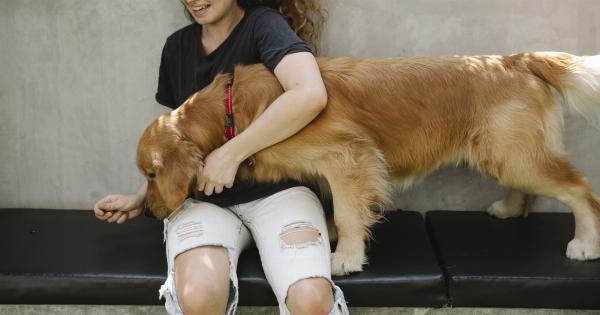Introducing a pet into a family home can be a joyous and rewarding experience for both children and parents alike. Pets not only bring love, companionship, and entertainment but also teach valuable life lessons to kids.
While there are countless options to choose from when considering a new family pet, some pets are especially well-suited to living with children. This article will explore one such pet that makes a fantastic addition to any family with kids.
The Loyal and Gentle Labrador Retriever
One pet breed that consistently ranks high for its compatibility with children is the Labrador Retriever.
Renowned for their loyalty, gentle nature, and ability to get along well with people of all ages, Labrador Retrievers have long been a popular choice for families.
Labradors have a kind and patient temperament, making them excellent playmates for energetic children. They are also highly intelligent, making training easier and allowing them to adapt to various family dynamics.
These dogs are known for their inherent sense of responsibility and love for their human family members.
Labradors are often described as “gentle giants” due to their larger size, but their size shouldn’t deter families from considering them.
In fact, their majestic stature can provide a sense of security for children, and their patient and friendly nature ensures they pose little risk to little ones.
Affectionate and Protective Golden Retrievers
Another pet breed that seamlessly blends into families with children is the Golden Retriever. Known for their affectionate and protective nature, Golden Retrievers make wonderful pets for families.
Golden Retrievers have a strong desire to please their owners, which makes them highly trainable and well-behaved. Their friendly disposition extends to children, and they often become fiercely protective of their young human siblings.
This protective instinct, combined with their gentle nature, makes them the perfect four-legged friend for kids.
Golden Retrievers are active dogs, so they will happily participate in a wide range of family activities, including playing in the backyard, accompanying children on walks or bike rides, or even joining them for a game of soccer in the park.
Their adaptability and easygoing nature also enable them to fit seamlessly into various family lifestyles.
Affordable and Low-Maintenance Guinea Pigs
If a smaller and more manageable pet is preferred, guinea pigs are an excellent choice for families with children.
Guinea pigs are gentle, sociable, and easy to care for, making them a great pet for kids who may not be ready for the demands of a dog or cat.
Unlike dogs or cats that require regular walks and exercise, guinea pigs can enjoy their daily dose of outdoor playtime right in their own enclosed space.
This not only saves time but also ensures children can actively participate in their pets’ care without feeling overwhelmed.
Guinea pigs are also known for their vocalizations, making them incredibly entertaining companions for kids.
Their adorable squeaks and purrs provide children with an interactive and amusing experience, fostering a sense of responsibility and empathy towards their furry friends.
Fun and Active Ferrets
Ferrets, although not as commonly considered as pets for children, can bring great joy and excitement to a family with older kids.
While they require a bit more supervision and specialized care, ferrets are incredibly playful and active, providing endless entertainment for the entire household.
These curious and energetic creatures love to explore, climb, and play, making them perfect companions for kids who enjoy interactive and adventurous pets.
Ferrets can be leash trained, allowing them to accompany children on short walks outdoors, or even explore the house and play in designated areas.
It’s important to note that ferrets require a specialized diet and an appropriately sized enclosure to keep them safe and happy. They also benefit from mental stimulation and socialization to prevent boredom.
With the right care and responsible ownership, however, ferrets can make a unique and exciting addition to families with children.
The Benefits of Having a Pet with Kids
Bringing a pet into a household with children offers numerous benefits, both to the kids and the entire family unit. Some of the key advantages of raising kids with pets include:.
1. Companionship and Unconditional Love
Pets provide constant companionship and unconditional love to their human family members. They are always ready to offer cuddles, playtime, and a listening ear, helping children feel supported and loved.
2. Teaching Responsibility
Having a pet comes with responsibilities, such as feeding, grooming, and ensuring their overall well-being.
By actively participating in their pets’ care, children learn valuable life skills, including accountability, empathy, and the importance of meeting others’ needs.
3. Social and Emotional Development
Pets can significantly contribute to a child’s social and emotional development.
They provide a safe and non-judgmental source of emotional support that can boost confidence, reduce stress, and help children develop empathy, compassion, and the ability to interpret non-verbal cues.
4. Enhanced Physical Activity
Pets, especially active dogs, can encourage children to engage in regular physical activity. Whether it’s playing fetch in the backyard, going for walks, or participating in agility training, pets keep kids active and promote a healthy lifestyle.
5. Boosting Immune System
Research suggests that kids growing up with pets may have stronger immune systems and be less prone to allergies and asthma.
Exposure to pet dander and microbes from animals early in life can help develop a child’s immune system, reducing the risk of allergies and certain illnesses.
6. Teaching Empathy and Compassion
Caring for a pet helps children develop empathy and compassion as they learn to anticipate their pets’ needs and respond sensitively.
They recognize that animals have feelings, require care, and deserve respect, which can extend to their interactions with peers and other living beings.
7. Decreasing Stress and Anxiety
Pets have a natural ability to help reduce stress and anxiety. Multiple studies have shown that petting a dog or cat can lower blood pressure and release feel-good hormones, ultimately promoting a sense of calm and well-being in children.
8. Teaching Boundaries and Respect
Interacting with pets teaches children about boundaries and respect for others. They learn to read their pets’ body language and understand when it’s appropriate to interact or give their pets some space.
This valuable lesson can translate to better relationships with people in various social settings.
9. Creating Lasting Memories
Having a pet in the family often leads to the creation of lasting memories and shared experiences.
Whether it’s celebrating birthdays, going on family trips, or simply enjoying everyday antics, pets become an integral part of the family narrative, creating stories that will be cherished for years to come.
Choosing the Right Pet for Your Family
While the pets mentioned above are generally well-suited for families with children, it’s important to research and consider specific factors when selecting the right pet for your family dynamics. Some crucial aspects to consider include:.
1. Lifestyle and Activity Level
Assess your family’s lifestyle and activity level to determine which pet species and breed will best fit your routine.
For example, active families that enjoy outdoor activities may lean towards larger dogs, while families with less time or space to spare may opt for low-maintenance pets like guinea pigs.
2. Age of the Children
The age of your children plays a significant role in determining the suitability of a pet.
Younger children may need a pet that is patient and tolerant, while older children may be ready for more complex pet care requirements or handling smaller critters that require gentler touch.
3. Allergies and Sensitivities
Consider any allergies or sensitivities within your family. Some individuals may be allergic to specific pet dander or have respiratory issues, which could influence the type of pet you choose to introduce into your home.
4. Available Space
Take into account the available space in your home when choosing a pet. Larger dog breeds may require more room to roam, while smaller pets like guinea pigs or hamsters can comfortably fit within limited spaces.
5. Financial Considerations
Keeping a pet requires financial commitment, ranging from the initial adoption or purchase costs to ongoing expenses like food, veterinary care, grooming, and pet supplies.
Assess your budget to ensure you can provide for your chosen pet’s needs throughout its lifetime.
6. Individual Pet Personalities
Remember that each pet, regardless of breed, has its own unique personality.
It’s crucial to spend time with potential pets, whether through visits to shelters, breeders, or reputable sellers, to get a sense of their temperaments and compatibility with your family.
The Arrival of a New Family Member
Once you’ve decided on the perfect pet for your family, it’s essential to ensure a smooth and positive transition for everyone involved. Here are some tips to make welcoming a new pet into your home a delightful experience:.
1. Prepare the Family
Talk to your children and prepare them for the arrival of the new pet. Discuss their roles and responsibilities, set expectations, and address any concerns or questions they may have. Help them understand the commitment involved in pet ownership.
2. Pet-Proof Your Home
Prior to bringing your new pet home, ensure your living environment is safe and pet-friendly.
Remove any hazardous objects or materials, secure loose wires, and make sure there are no small items that could be swallowed or pose a danger to your furry friend.
3. Create a Welcoming Space
Designate a comfortable space for your new pet, whether it’s a specific room or area within your home. Fill it with bedding, toys, food, and water bowls to give them a sense of security and ownership from day one.
4. Gradual Introduction
If you already have children, introduce them to the new pet gradually.
Allow them to spend supervised, calm moments together, ensuring the pet doesn’t feel overwhelmed and the children understand how to interact respectfully with their new companion.
5. Family Bonding Time
Encourage regular family bonding time with your new pet. Engage in activities like walks, playtime, and training sessions together. This will help strengthen the bond between family members and the pet, ensuring a mutually rewarding relationship.
6. Consistency and Routine
Pets thrive on consistency and routine. Establish a daily routine that incorporates feeding times, training sessions, exercise, and down time. This predictability helps pets feel secure and builds their trust in their human family members.
7. Seek Professional Guidance
If you or your children are first-time pet owners, consider seeking professional guidance.
Dog trainers, behaviorists, or pet care specialists can provide valuable advice and support, helping you navigate any challenges that may arise during the pet’s adjustment period.
Conclusion
Adding a pet to your family can be an incredibly rewarding experience for both children and parents. The right pet can become an integral part of your family, providing love, companionship, and countless memorable moments.
Whether you choose a loyal Labrador Retriever, an affectionate Golden Retriever, a low-maintenance guinea pig, or a playful ferret, the key is to select a pet that aligns with your family’s lifestyle, preferences, and dynamics. Embrace the journey of pet ownership and cherish the positive impact it brings into your family’s life.




























